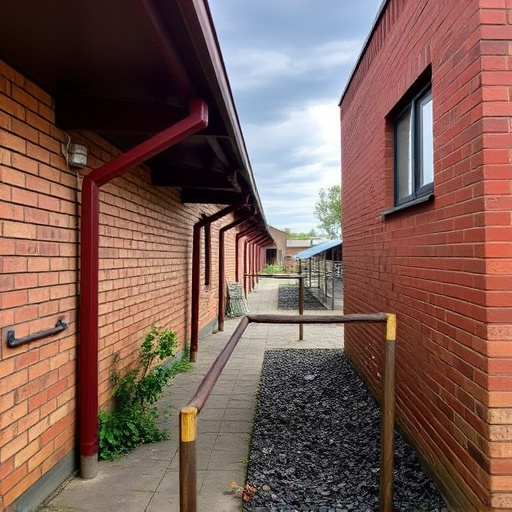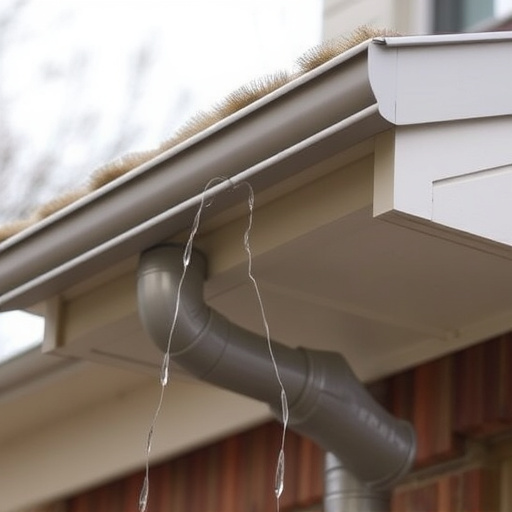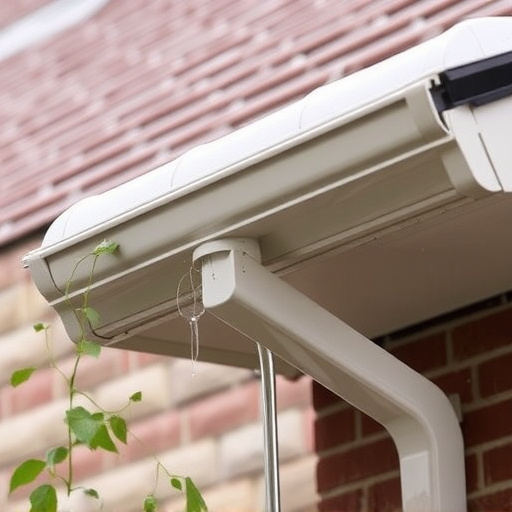Gutter Bendigo: Unveiling the Complexities of Urban Water Management
Introduction
Welcome to an in-depth exploration of a critical yet often overlooked aspect of urban development—Gutter Bendigo. This comprehensive article aims to unravel the intricacies of this system, its global impact, and its role in shaping sustainable cities. Gutter Bendigo, a seemingly mundane infrastructure component, is a cornerstone of modern urban water management, playing a vital role in flood prevention, drainage, and environmental health. In this article, we will navigate through various facets, from its historical roots to cutting-edge technological innovations, providing valuable insights for urban planners, policymakers, and anyone interested in the evolution of smart cities.
Understanding Gutter Bendigo: A Definition and Its Role
What is Gutter Bendigo?
Gutter Bendigo, a term that might evoke curiosity among many, refers to an innovative urban water management system designed primarily for drainage and flood control. It involves a network of underground channels, pipes, and structures strategically incorporated into the fabric of cities. These systems are engineered to collect, convey, and manage stormwater runoff, ensuring it is safely directed away from built-up areas during heavy rainfall events.
Historical Context:
The concept of Gutter Bendigo has evolved over centuries, driven by the increasing urbanisation and challenges posed by rapid climate change. Ancient civilisations relied on natural drainage systems, such as rivers and streams, to manage stormwater. However, with urban expansion and intensification, these traditional methods became inadequate. The modern approach to Gutter Bendigo emerged in the mid-20th century, incorporating advanced engineering principles, materials science, and environmental considerations.
Significance:
Gutter Bendigo is not merely a technical solution; it is a critical component of sustainable urban development. Its primary function is to prevent flooding, which can cause immense damage to property, infrastructure, and even loss of life. By effectively managing stormwater, these systems contribute to the overall resilience of cities, ensuring they remain habitable during extreme weather events. Moreover, Gutter Bendigo plays a vital role in water quality management by filtering pollutants and sediments before water enters streams, rivers, or treatment facilities.
Global Impact and Trends
International Influence:
The concept of Gutter Bendigo has transcended geographical boundaries, finding applications across diverse landscapes and climates. Cities worldwide have adopted variations of this system to address their unique drainage challenges. From the dense urban fabric of Europe to the sprawling metropolitan areas of Asia and North America, Gutter Bendigo has become a universal solution with local adaptations.
Regional Variations:
- Europe: In densely populated European cities like London and Paris, Gutter Bendigo often involves sophisticated network systems beneath the streets, incorporating advanced materials for better corrosion resistance and longer lifespans.
- North America: American metropolises such as New York City have implemented combined sewer systems, where stormwater and raw sewage are carried in the same pipes to treatment plants, requiring robust and efficient drainage mechanisms.
- Asia: Rapidly urbanising countries like China and India face unique challenges, often involving massive infrastructure projects to manage intense rainfall and prevent flash floods in high-density areas.
Emerging Trends:
- Green Infrastructure: A global trend towards sustainable and nature-based solutions has led to the integration of green infrastructure into Gutter Bendigo designs. This includes incorporating permeable surfaces, bioswales, and rain gardens to promote natural water absorption and reduce the strain on traditional drainage systems.
- Smart City Technologies: The Internet of Things (IoT) is revolutionising Gutter Bendigo management. Sensors installed in drainage systems can monitor flow rates, detect blockages, and predict flood risks, enabling real-time data-driven decision-making.
- Climate Change Adaptation: With changing weather patterns, cities are equipping their Gutter Bendigo systems to cope with increased frequency and intensity of rainfall events, ensuring resilience against climate change.
Economic Considerations
Market Dynamics:
The global market for urban water management, including Gutter Bendigo solutions, is experiencing steady growth. This growth is driven by the increasing frequency and severity of natural disasters, rising urbanization rates, and growing environmental awareness. According to a 2021 report by Market Research Future (MRFR), the market value was valued at USD 39.7 billion in 2020 and is projected to reach USD 54.3 billion by 2027, growing at a CAGR of 5.2% during the forecast period.
Investment Patterns:
Governments worldwide are investing heavily in infrastructure upgrades, including Gutter Bendigo systems, as part of broader urban renewal and resilience initiatives. Private sector participation is also increasing through public-private partnerships (PPPs), leveraging expertise and resources for complex water management projects.
Economic Impact:
Efficient Gutter Bendigo systems contribute to a city’s overall economic health by:
- Reducing Flood Damage: Preventing widespread flooding minimises property losses, business disruptions, and reconstruction costs, saving cities billions in potential economic impacts.
- Improving Water Quality: Better water management leads to cleaner water bodies, attracting tourism and fostering recreational activities, which have positive economic spin-offs.
- Attracting Businesses: Cities with robust flood control mechanisms are more attractive to businesses, promoting economic growth and job creation.
Technological Advancements in Gutter Bendigo
Innovations Shaping the Future:
The digital age has brought a wave of technological advancements that are revolutionising Gutter Bendigo systems:
- Data Analytics: Advanced data analytics and machine learning algorithms enable predictive modeling of stormwater runoff, helping manage water flow more efficiently.
- Automated Cleaning Systems: Robotic devices and automated cleaning mechanisms can inspect and clean pipes remotely, reducing manual labour costs and improving system efficiency.
- Smart Sensors: Internet-connected sensors provide real-time data on water levels, flow rates, and pipe conditions, enabling proactive maintenance and early detection of potential issues.
- 3D Modeling and Simulation: Computer-aided design (CAD) and simulation tools allow engineers to model complex drainage systems virtually, optimising designs before construction.
Future Potential:
As technology advances, Gutter Bendigo systems are expected to become increasingly intelligent and interconnected, forming part of the broader ‘smart city’ ecosystem. This integration will enable cities to respond dynamically to changing weather patterns, population growth, and urban development, ensuring sustainable water management for generations to come.
Policy and Regulation: Governance of Gutter Bendigo
Key Policies and Frameworks:
Effective management of Gutter Bendigo systems requires a robust regulatory framework and supportive policies. Many countries have implemented specific legislation to govern urban water management, while others incorporate these provisions within broader environmental and infrastructure laws. Some key global frameworks include:
- The United Nations’ Sustainable Development Goals (SDGs): SDG 6, ‘Clean Water and Sanitation,’ underscores the importance of safe and sustainable water management practices, including Gutter Bendigo systems.
- International Association for Drainage (IAD) Guidelines: IAD provides technical guidelines and best practices for drainage design, construction, and maintenance worldwide.
- National and Regional Regulations: Many countries have specific regulations for urban water management. For example, the European Union’s Water Framework Directive sets standards for water quality and encourages the use of sustainable drainage systems.
Influence on Development:
These policies and frameworks guide the design, construction, and maintenance of Gutter Bendigo systems, ensuring they meet environmental, social, and economic sustainability criteria. They also promote best practices, encourage innovation, and ensure accountability in decision-making processes.
Challenges and Criticisms: Overcoming Barriers
Main Challenges:
Despite their benefits, Gutter Bendigo systems face several challenges that hinder their widespread adoption and optimal performance:
- High Initial Costs: Constructing and maintaining complex drainage systems can be expensive, making it a significant financial burden for municipalities.
- Space Constraints: In densely populated urban areas, finding suitable space for Gutter Bendigo infrastructure can be challenging, especially when retrofitting existing systems.
- Maintenance and Blockages: Regular maintenance is crucial to prevent blockages, but access to pipes and structures can be difficult, leading to costly repairs and potential flooding.
- Environmental Concerns: Improperly designed or maintained systems can impact water quality, requiring careful consideration of ecological considerations.
Criticisms and Proposed Solutions:
- Lack of Public Awareness: Critics argue that public awareness about the importance of Gutter Bendigo is insufficient. Educational campaigns and community engagement initiatives can address this by promoting responsible land use practices and fostering a sense of collective responsibility for water management.
- Inadequate Funding: Insufficient financial resources at the local government level hinder effective system maintenance and upgrades. Governments should allocate dedicated funds for urban water management and explore innovative financing mechanisms, such as public-private partnerships or user fees, to ensure sustainable funding.
- Technological Integration: While technology offers solutions, some critics express concerns about digital divide issues and the need for equitable access to smart city technologies. Collaborative efforts between technology providers, municipalities, and community organisations can bridge this gap.
- Environmental Impact Assessment: Rigorous environmental impact assessments are necessary to ensure that Gutter Bendigo systems do not cause ecological harm. Incorporating green infrastructure and sustainable design principles can mitigate potential adverse effects.
Case Studies: Real-World Applications and Lessons Learned
Case Study 1: Singapore’s Innovative Drainage System
Singapore, a small city-state with limited land and rapid urbanisation, has developed an advanced Gutter Bendigo system that integrates seamlessly with its smart city initiatives. The country’s ‘Re-Natura’ project is a prime example of successful implementation. This scheme involves the transformation of a former drainage channel into a mixed-use green space, featuring parks, walking trails, and water features. By combining flood control, water quality improvement, and urban recreation, Singapore has created a model for sustainable urban development.
Key Takeaways:
- Integrating Gutter Bendigo into urban planning can enhance the overall aesthetic and livability of cities.
- Green infrastructure solutions not only address drainage challenges but also contribute to carbon sequestration and biodiversity conservation.
- Public-private partnerships can drive innovative and cost-effective project delivery.
Case Study 2: Amsterdam’s Flood Protection System
Amsterdam, known for its picturesque canals and historic architecture, faces ongoing challenges with flood protection due to rising sea levels and intense rainfall events. The city has implemented a multi-faceted approach, including Gutter Bendigo systems, to safeguard its low-lying areas. One notable project is the ‘Amsterdam Canal Ring,’ which involves the renovation of existing canals and the construction of new barriers to protect against flooding.
Lessons Learned:
- Adaptive management strategies that combine natural and engineered solutions are effective in resilient urban flood protection.
- Engaging local communities in decision-making processes fosters a sense of ownership and support for implementation.
- Continuous monitoring and adaptation are crucial, as climate change may require adjustments to existing systems over time.
Future Prospects: Emerging Trends and Strategic Considerations
Potential Growth Areas:
- Smart Water Management Cities: The integration of Gutter Bendigo with IoT devices, sensors, and data analytics will enable cities to optimise water management, predict flood risks, and enhance overall urban resilience.
- Sustainable Infrastructure: Future Gutter Bendigo systems will increasingly incorporate green infrastructure, such as bioswales, permeable pavements, and rain gardens, to promote natural water absorption and reduce the strain on traditional drainage networks.
- Digital Twin Technologies: Digital twins—virtual replicas of physical systems—can be used to model and simulate Gutter Bendigo networks, allowing for optimal design, predictive maintenance, and future-proofing against climate change.
Emerging Trends to Watch:
- Micro-drainage Systems: These decentralized drainage solutions are suitable for smaller urban areas or specific flood-prone sites, offering greater flexibility and local control over water management.
- Natural Flood Management (NFM): NFM involves the restoration or enhancement of natural features like rivers, wetlands, and forests to manage stormwater runoff and reduce the risk of flooding downstream.
- Community-based Initiatives: Empowering local communities to participate in Gutter Bendigo planning and maintenance can lead to more effective and sustainable water management practices tailored to specific neighbourhood needs.
Conclusion: Navigating the Future of Urban Water Management
Gutter Bendigo, a seemingly mundane urban infrastructure, is at the forefront of sustainable city development, playing a pivotal role in flood prevention, water quality management, and environmental health. As cities continue to grow and face the challenges of climate change, the importance of efficient and resilient water management systems cannot be overstated. By understanding the historical context, global impact, technological advancements, and policy frameworks surrounding Gutter Bendigo, we can navigate the future with confidence.
The case studies presented in this article demonstrate that successful implementation requires a holistic approach, combining technical expertise, innovative design, public engagement, and adaptive management strategies. As cities embrace smart city technologies and sustainable practices, Gutter Bendigo will remain a critical component of urban water management, shaping the resilience and livability of our ever-evolving metropolises.
FAQ Section: Answering Common Queries
Q1: What is the primary function of Gutter Bendigo?
A: The primary function is to collect, convey, and manage stormwater runoff during heavy rainfall events, preventing flooding in urban areas.
Q2: How does Gutter Bendigo contribute to sustainable cities?
A: By effectively managing stormwater, Gutter Bendigo reduces flood risks, minimizes property damage, and supports cleaner water bodies, fostering sustainable urban environments.
Q3: What are some challenges associated with implementing Gutter Bendigo systems?
A: Challenges include high initial costs, space constraints in dense urban areas, maintenance issues, and environmental concerns that require careful planning and design.
Q4: Can Gutter Bendigo systems be integrated into smart city initiatives?
A: Absolutely! The integration of IoT sensors, data analytics, and digital twin technologies allows Gutter Bendigo to become a key component of smart city ecosystems, enhancing urban resilience and efficiency.
Q5: How do policy frameworks support the development of Gutter Bendigo systems?
A: Policies and regulations provide guidelines for design, construction, and maintenance, ensuring sustainability, environmental protection, and accountability in water management practices.
Steeline Roofing Centre Bendigo offers exceptional gutter fitting services with experienced professionals and top-quality products. They provide a wide range of gutter fittings in various styles, materials, and colors, ensuring durable, function…….
Continue Reading
Steeline Roofing Centre Bendigo emphasizes the vital role of regular gutter maintenance to prevent clogs, water damage, and structural issues. They offer prompt, reliable services tailored to local conditions, from cleaning to complex repairs, p…….
Continue Reading
Steeline Roofing Centre Bendigo is a trusted provider of high-quality gutter solutions for both residential and commercial properties. With a focus on protecting roofs and homes in regions with high rainfall, like Bendigo, they offer custom-fitt…….
Continue Reading
Steeline Roofing Centre Bendigo is your local partner for all roofing and guttering needs. They offer a diverse range of high-quality products, including traditional metal and modern PVC gutters, suitable for both residential and commercial prop…….
Continue Reading
Steeline Roofing Centre Bendigo is a trusted local supplier offering high-quality gutter supplies for both residential and commercial needs. They provide a comprehensive range of products, including traditional metal and modern PVC gutters, alon…….
Continue Reading
Steeline Roofing Centre Bendigo provides high-quality gutter systems designed to withstand Australia's weather, enhancing your home's protection and aesthetics. With expert advice, tailored solutions, and premium materials, they offer…….
Continue Reading
In Bendigo's variable climate, proper gutter maintenance is crucial for protecting homes and businesses from water damage. Steeline Roofing offers expert gutter installation, repair, and cleaning services with local experience. They provide…….
Continue Reading
Steeline Roofing Centre Bendigo is a leading supplier of high-quality roofing and building materials, conveniently located at 6 Harrien Ct, Epsom VIC 3551, Australia. They address accessibility challenges for residential and commercial areas wit…….
Continue Reading
Gutter Bendigo systems are essential for protecting homes and businesses in Bendigo from water damage. Steeline Roofing Centre Bendigo offers a wide range of gutter solutions, expert advice, and high-quality installations tailored to diverse nee…….
Continue Reading
In Bendigo's unpredictable climate, Steeline Roofing Centre offers tailored gutter solutions. Located at 6 Harrien Ct, Epsom VIC 3551, Australia, they address common issues like blocked gutters and leaking systems. With expert advice and qu…….
Continue Reading
Steeline Roofing Centre Bendigo is your trusted local partner for all guttering needs, offering top-quality products and expert services in Epsom, VIC, Australia. They provide a wide range of durable gutter supplies, including traditional K-styl…….
Continue Reading
In Bendigo's varied climate, efficient guttering is essential for home protection. Steeline Roofing Centre offers top-quality gutter installations and maintenance to prevent water damage and flooding. They provide both traditional K-Style a…….
Continue Reading
In Bendigo's varied climate, robust gutter systems are essential for protecting homes. Steeline Roofing Centre Bendigo offers top-quality gutter installations, repairs, and maintenance tailored to local conditions, preventing water damage,…….
Continue Reading
Steeline Roofing Centre Bendigo offers tailored gutter solutions for local climate protection. With diverse options, expert advice, and custom fitting services, they ensure roofline integrity and structural strength. Their high-quality stainless…….
Continue Reading
In Bendigo, where significant rainfall poses risks, Steeline Roofing Centre offers expert gutter solutions. Their services range from installation to maintenance, emphasizing protection against water damage, mold, and erosion. Using high-grade m…….
Continue Reading
Steeline Roofing Centre Bendigo is your go-to destination for all gutter-related needs, offering high-quality supplies and expert advice for both professionals and DIYers. With a diverse range of gutters, downpipes, and accessories, they cater t…….
Continue Reading
Steeline Roofing Centre Bendigo emphasizes the critical importance of regular gutter maintenance in preserving homes' structural integrity in Bendigo, Australia. Clogged gutters lead to water damage and costly repairs. They offer fast, effi…….
Continue Reading
Steeline Roofing Centre Bendigo specializes in gutters, offering expert advice and a range of options tailored to local needs. They provide comprehensive gutter installations, repairs, and maintenance at competitive prices. Neglecting gutters ca…….
Continue Reading
Steele Roofing Centre Bendigo provides top-tier gutter solutions using durable Steeline products. They offer expert installation, repair, and maintenance services for all property needs, ensuring year-round protection from the elements. Despite…….
Continue Reading


















